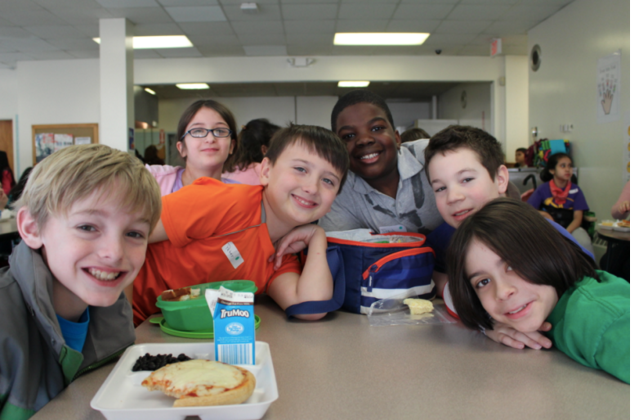By KRISTINA BEAUGH
Back to school, back to the books, back shuttling students to and from extracurricular activities. The new school year likely means back to packing lunches and after-school snacks for students, scouts, athletes, dancers, and all the other children who carry these items to and from home.
One “back” you do not want to reacquaint children with, however, is foodborne bacteria.

This and other safety tip images on this page are from the FoodSafety.gov Facebook timeline.
Bacteria that cause foodborne illness, commonly known as food poisoning, grow rapidly at temperatures between 40 and 140 degrees Fahrenheit.
In this temperature range, these microorganisms can multiply to dangerous levels in just two hours, increasing the risk of foodborne illness.
___________
— This August 2015 article is from the U.S. Department of Agriculture website. Kristina Beaugh is on the department’s food safety education staff.
___________
 To make sure lunches and snacks are safe for those for whom you pack, you should follow the USDA’s four steps to food safety: Clean, Separate, Cook, and Chill.
To make sure lunches and snacks are safe for those for whom you pack, you should follow the USDA’s four steps to food safety: Clean, Separate, Cook, and Chill.
Packing Tips
- If the lunch/snack contains perishable food items like luncheon meats, eggs, cheese, or yogurt, make sure to pack it with at least two cold sources. Harmful bacteria multiply rapidly, so perishable food transported without an ice source will not stay safe long.
- Frozen juice boxes or water can also be used as freezer packs. Freeze these items overnight and use with at least one other freezer pack. By lunchtime, the liquid should be thawed and ready to drink.
- Pack lunches containing perishable food in an insulated lunchbox or soft-sided lunch bag. Perishable food can be unsafe to eat by lunchtime if packed in a paper bag.

- If packing a hot lunch, like soup, chili or stew, use an insulated container to keep it hot. Fill the container with boiling water, let stand for a few minutes, empty, and then put in the piping hot food. Tell children to keep the insulated container closed until lunchtime to keep the food hot at 140 °F or above.
- If packing a child’s lunch the night before, parents should leave it in the refrigerator overnight. The meal will stay cold longer because everything will be refrigerator temperature when it is placed in the lunchbox.
- If you’re responsible for packing snacks for the team, troop, or group, keep perishable foods in a cooler with ice or cold packs until snack time. Pack snacks in individual bags or containers, rather than having children share food from one serving dish.
Storage Tips
- If possible, a child’s lunch should be stored in a refrigerator or cooler with ice upon arrival. Leave the lid of the lunchbox or bag open in the fridge so that cold air can better circulate and keep the food cold.
Eating and Disposal Tips
- Pack disposable wipes for washing hands before and after eating.
- After lunch, discard all leftover food, used food packaging, and paper bags. Do not reuse packaging because it could contaminate other food and cause foodborne illness.
Consumers can learn more about key food safety practices at Foodsafety.gov, by “following” @USDAFoodSafety on Twitter, and by liking FoodSafety.gov on Facebook.
Consumers with questions about food safety, can call the USDA Meat and Poultry Hotline at 1-888-MPHotline (1-888-674-6854) or chat live with a food safety specialist at AskKaren.gov, available from 10 a.m. to 4 p.m. Eastern Time, Monday through Friday, in English or Spanish.
If you have questions about storage times of food or beverages, download USDA’s new FoodKeeper application for Android and iOS devices.

(photo from Greenwich Free Press)
